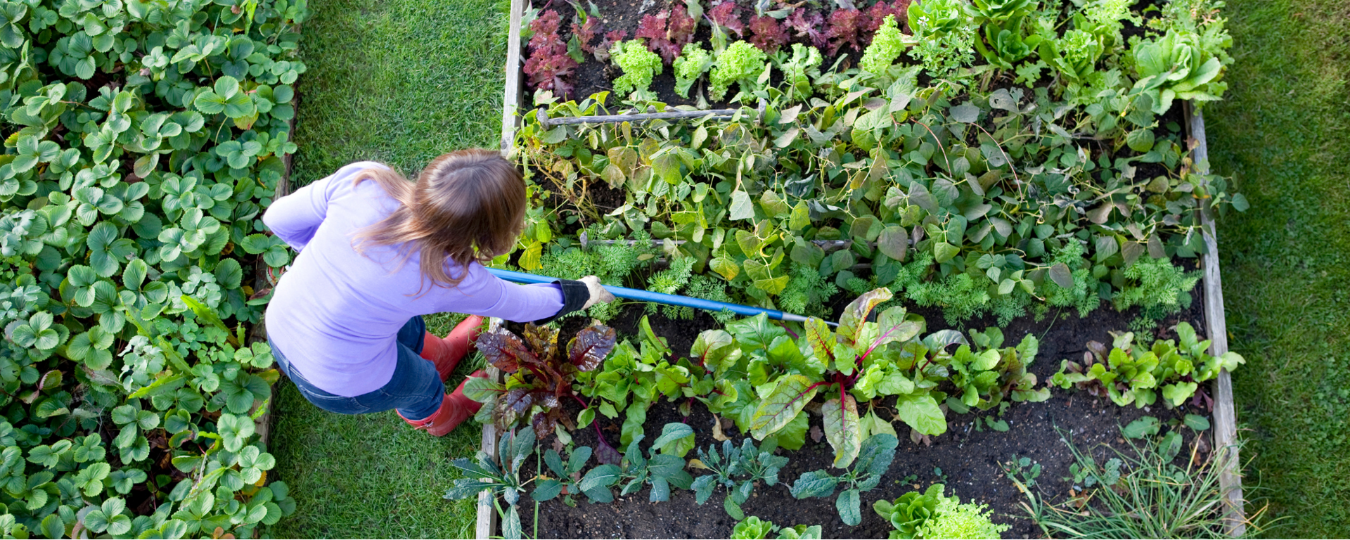CREATE YOUR OWN VEGETABLE PATCH

Growing your own fruit and vegetables is healthier as it allows you to control how your food is grown, choosing organic methods if you wish. It is also much cheaper, thus reducing your weekly grocery bill.
Creating your own vegetable patch takes less time, effort and money than you may think. If you can give it an hour each week, you will be astounded with the results, and will want to maintain your dedicated area each year.
Where to Put Your Vegetable Patch
The first decision you need to make is choosing a location for your new vegetable patch. If space is limited, don’t let that deter you from proceeding. Whether you have acres of land, a small garden, a balcony or just a windowsill, there is always space to grow your own fruit, vegetables and herbs.
A common misconception is that you will need a greenhouse. Although greenhouses are very useful for growing your own food, they are not a necessity.
Ideally you should look for a dedicated and raised location, whether a bed in your garden or large pots on your window ledge or balcony. This will allow more sunlight to reach the plants. Your crops will need all the sun’s vital nutrients to grow so avoid obstacles that may shade them such as hanging trees or buildings.
Essential Tools to Create & Maintain Your Patch
Having the right tools to hand will make this project much easier and enjoyable. Must have tools include a spade, a fork, a hoe, a pair of secateurs, a trowel, a rake, a watering can, gardening gloves, and some comfortable garden clothes. Smaller versions of these tools may be more suitable for you depending on the size of your patch. Costs vary and you will want to stay within budget, however you should always try purchase higher quality tools where possible, for longevity.
The Perfect Soil
You will need good soil quality in your vegetable patch to support growth and provide nutrients to the various crops. Adding garden compost or soil conditioner to your existing soil will help.
You will also need to check that your vegetable patch is well drained so that your growing vegetables will not get destroyed in a heavy rainfall. To check this you should fill your vegetable patch with water before you plant your seeds and if the water is still there the following day you will need to take steps to improve the drainage.
What to Grow
When your vegetable patch is ready to be planted, you will need to decide what crops you would like to grow. There are hundreds of vegetables, fruits and herbs that flourish in Ireland at different times of the year. Use your personal taste preference and the time of year to help you choose your crops. Your local garden centre will be able to give you some direction on what crops to choose if you are unsure.
The next step is whether to grow from seeds or from a plug plant; the latter is less effort and less risky. We recommend experimenting with growing from seeds first to allow you to watch the growing process. Within weeks you will be eating your own freshly picked vegetables and fruits and the satisfaction is enormous.
Here are some ideas of what to grow in each season:
- Winter - asparagus, garlic, shallots, peas, rhubarb, lettuce, onions, and spinach.
- Spring – carrots, cabbage, herbs, beetroot, tomatoes, lettuce, spring onion, potatoes, and peas.
- Summer – beetroot, cabbage, cauliflower, carrots, celery, lettuce, parsnips, radish, squash, and tomatoes.
- Autumn – beetroot, broccoli, cabbage, carrots, cress, leeks, lettuce, onion, peas, shallots, turnip, and spinach.


Leave a Comment